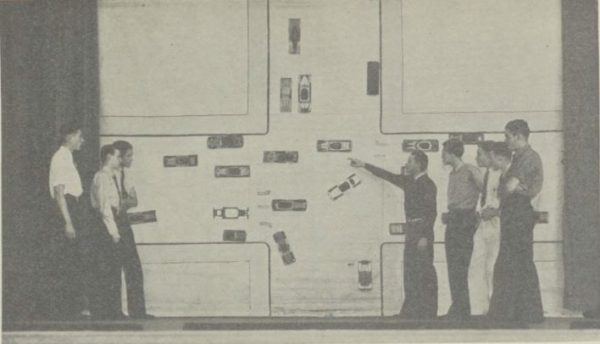Learning to drive has long been one of the milestones that teenagers most look forward to during their high school years. Eighty-odd years ago, “driver’s ed” — or “traffic safety” as they called it back then — was a part of the junior and senior high school curriculum.
In 1936 there were 317,252 cars, trucks, and motorcycles registered in Colorado. (There had been fewer than 50,000 just 20 years before).* So in response to the growing “dangers and hazards of the city streets and highways of Colorado,” the Colorado Department of Education suggested “at least one period a week throughout the four-year high school course to be given to instruction in traffic safety courses.” To guide teachers in lesson plans and curriculum, the department issued Course of Study in Traffic Safety for Junior and Senior High Schools in Colorado, which has recently been digitized by our library.
During the first year of study, students learned basic traffic laws and a “history of transportation.” This was followed by case studies and activities during the second year. Curriculum for the third year consisted of “a study of the physical, mental, and emotional traits of the driver and pedestrian as well as the construction and characteristics of various highways.” Finally, fourth-year students examined “the traffic problem in general and the way in which society is dealing with it.” Driving tests and examinations were also administered, although the department left these to the discretion of local school districts.
The Course of Study guidebook was meant to help teachers instruct their students on much more than just rules of the road. Personal responsibility, courtesy, and good judgment were emphasized throughout. While driver’s ed has changed a lot since 1936, many things remain the same.

*Source: Year Book of the State of Colorado
- How to Spot the Differences Between Eagles and Hawks - August 16, 2021
- How Transportation Projects Help Tell the Story of Colorado’s Past - August 9, 2021
- Time Machine Tuesday: The Night the Castlewood Canyon Dam Gave Way - August 3, 2021